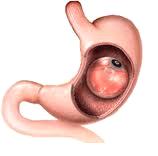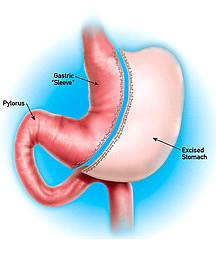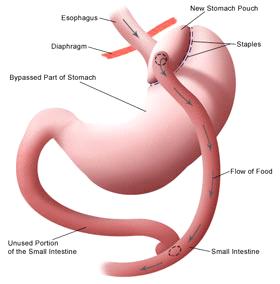Types of Surgery
Intragastric balloon
 This surgery involves endoscopic placing a deflated balloon into the stomach and then filling it to decrease the amount of gastric space. The balloon can be left in the stomach for a maximum of 6 months and results in an average decrease in BMI of 5-9 over half a year. Gastric balloon is not a long term solution for weight loss. Tolerability with the gastric balloon is poor and most of the balloons need to be removed before the planned 6 months period due to intolerance with the balloon. Gastric balloon is ideal for decreasing small amount of weight in preparation for obesity surgery for those who are very high risk for surgery from anaesthesia point of view and where small amount of weight loss is expected to decrease the risk of surgery and anaesthesia.
This surgery involves endoscopic placing a deflated balloon into the stomach and then filling it to decrease the amount of gastric space. The balloon can be left in the stomach for a maximum of 6 months and results in an average decrease in BMI of 5-9 over half a year. Gastric balloon is not a long term solution for weight loss. Tolerability with the gastric balloon is poor and most of the balloons need to be removed before the planned 6 months period due to intolerance with the balloon. Gastric balloon is ideal for decreasing small amount of weight in preparation for obesity surgery for those who are very high risk for surgery from anaesthesia point of view and where small amount of weight loss is expected to decrease the risk of surgery and anaesthesia.
Sleeve gastrectomy

Sleeve gastrectomy is a surgical weight-loss procedure in which the stomach is reduced to about 15% of its original size by surgical removal of a large portion of the stomach. The open edges of the stomach are then attached together (often with surgical staplers) to form a sleeve or tube with a banana shape. The procedure permanently reduces the size of the stomach. The procedure is performed laparoscopically and is not reversible.
Although stomach volume is reduced, it tends to function normally; so most food items can be consumed in small amounts. This surgery removes the portion of the stomach that produces the hormones that stimulates hunger (Ghrelin). No dumping syndrome because the pylorus is preserved. Minimizes the chance of an ulcer occurring (no need to mention) .By avoiding the intestinal bypass, the chance of intestinal obstruction (blockage), anemia, osteoporosis, protein deficiency and vitamin deficiency are significantly reduced.
Gastric Bypass Surgery

A common form of gastric bypass surgery is the Roux-en-Y gastric bypass. Here, a small stomach pouch is created with a stapler device and connected to the distal small intestine. The upper part of the small intestine is then reattached in a Y-shaped configuration.
The gastric bypass had been the most commonly performed operation for weight loss in the United States. A factor in the success of any bariatric surgery is strict post-surgical adherence to diet and a healthier pattern of eating. This procedure is most consistent in maintaining weight loss and improving diabetes and other comorbidities related to obesity. Long term follow up is a must as there are changes of malnutrition after this procedure. Strict adherence to diet and lifelong supplementation with vitamin, iron and calcium is required after this procedure.
Life Long Commitment:
To maintain weight loss after the surgery, you have to continue to eat less, change your dietary habits and increase physical activity. Weight reduction surgery helps you in changing your food behaviour by giving early satisfaction after a small meal and providing prolonged feeling of fullness so that you can adhere to the dietary control. It also makes adhering to the regimen of physical activity much easier. Nobody other than an obese person can understand the different problems of performing physical activity. Weight reduction with surgery certainly helps in following the diet and exercise plan. What it does not do is change the behaviour pattern, so it is very important for patients to understand that lifelong commitment from their side is the most important aspect of the management of obesity.


